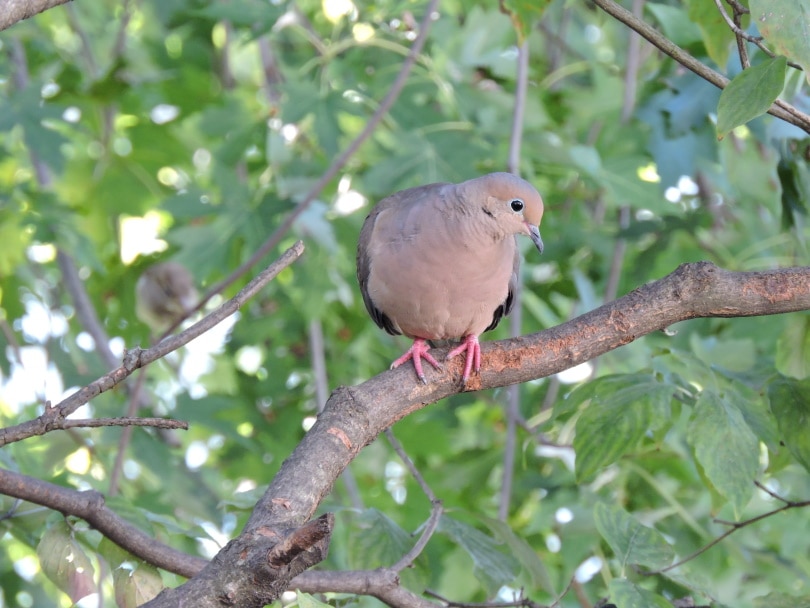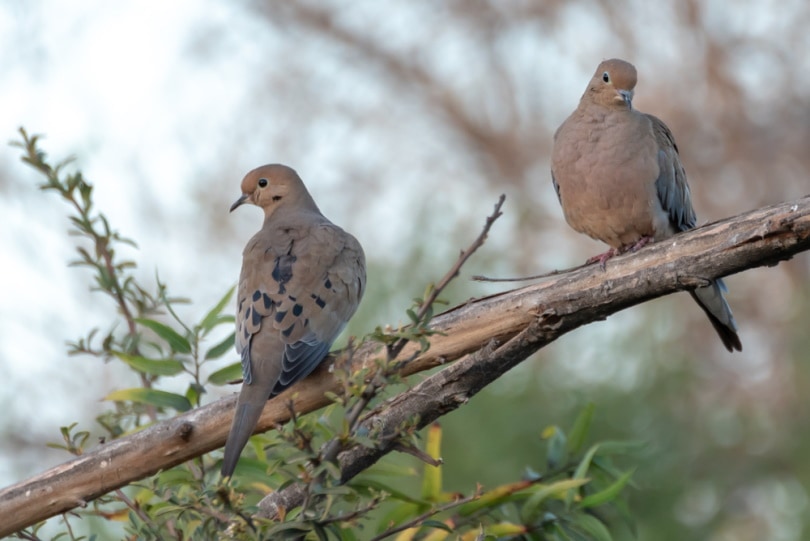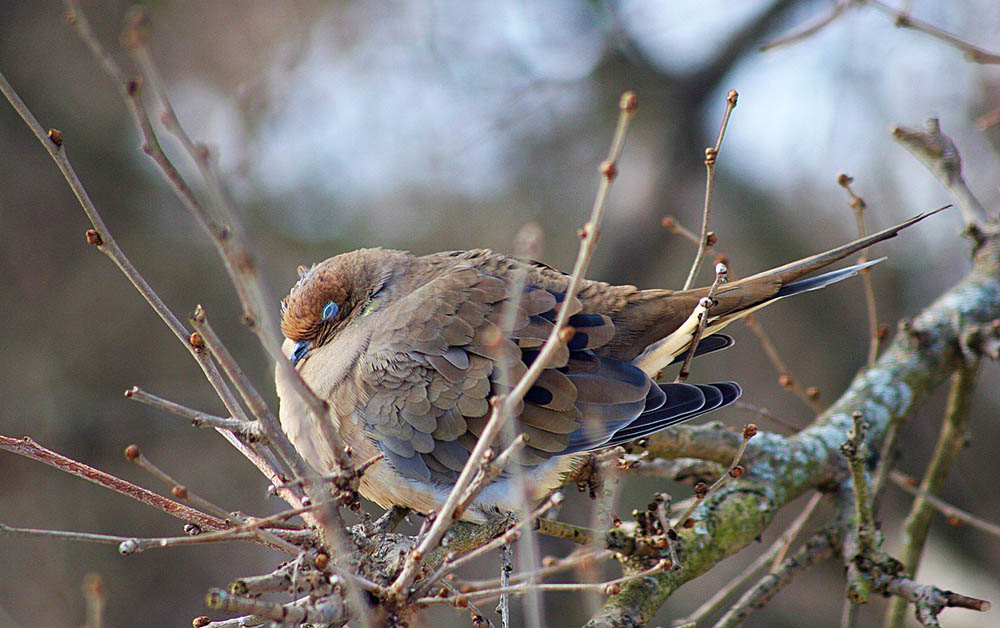Do Mourning Doves Migrate? What You Need To Know!
Last Updated on

It’s not unusual to hear the sound of a melancholy bird roosting on telephone poles throughout North America, and the mourning dove is recognized by many for this trait alone. However, you’re probably here to learn whether or not mourning doves migrate or not. Look below to find the answer and interesting facts about the mourning dove.

Mourning Dove Migration
The mourning dove does indeed migrate, but it’s all dependent on the location they live in and their habits. In the southern regions of Canada, in addition to the Dakotas, Montana, and Minnesota, there are many spots where the mourning dove only travels to breed.
After this seasonal event, they go down farther south, sometimes even to the nations of Central America. Here, they don’t mate. In some areas, doves may not migrate at all, especially if they live in the contiguous United States and stay in one spot for the better part of the year due to the less extreme conditions.

Do Mourning Doves Return to the Same Place Every Year?
Interestingly enough, the mourning dove returns to its previous nesting area, but only if it is a pleasant place to live. That means it would have had a successful breeding season, with as many as five clutches produced during the year.
How Do Mourning Doves Survive Winter?
Despite its migrations to warmer climates, the mourning dove may still fight through the wintertime. As we mentioned previously, there is a large population of the birds that stay in a single location year-round. To keep up with the low temperatures and freezing cold, the species tends to nest in dense areas of vegetation or confined spaces, such as fir trees, birdhouses, or tree cavities.
This provides enough warmth to survive, in addition to their large size compared to small birds. They have a lot of feathers and are known to be a bit plump, which is a beneficial trait for colder temperatures.

More About This Species
The mourning dove (Zenaida macroura) is a member of the Columbidae family and is one of the most commonly seen birds in the United States, and it’s abundant in cities and towns. It has a grey coat, whitish belly, and a distinct “pigeon” body. Doves can be spotted at dawn or dusk perched on telephone poles as they sing their moody “Coo! Oo… Oo… Oo…” with steady pauses between the calls. Sometimes, they may also caw or squeal when chasing one another. Doves are fond of seeds, and several people enjoy feeding them grain on the streets and in their yards.
Featured Image Credit: Piqsels
About the Author Robert Sparks
Robert’s obsession with all things optical started early in life, when his optician father would bring home prototypes for Robert to play with. Nowadays, Robert is dedicated to helping others find the right optics for their needs. His hobbies include astronomy, astrophysics, and model building. Originally from Newark, NJ, he resides in Santa Fe, New Mexico, where the nighttime skies are filled with glittering stars.
Related Articles:
Can You Use Binoculars to Look At Stars? How to Choose the Right Pair
10 Types of Hummingbirds in Arkansas (With Pictures)
8 Types of Hummingbirds in Nebraska (With Pictures)
5 Types of Hummingbirds in Idaho (With Pictures)
3 Types of Hummingbirds in Mississippi (With Pictures)
8 Types of Hummingbirds in Kansas (With Pictures)
5 Types of Hummingbirds in West Virginia (With Pictures)
5 Types of Hummingbirds in Ohio (With Pictures)
